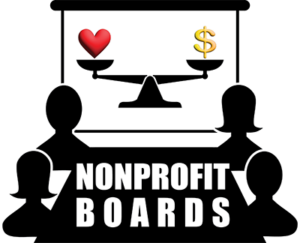
Because numerous sources of information regarding governing boards for nonprofit organizations are available online, in this series of blogs I touch on a few topics governing board members should consider.
A charitylawyer.com blog focuses specifically on common mistakes governing board members for nonprofit organizations make.[i] Nearly all are addressed in previous blogs on governing board responsibilities and challenges, but it’s worthwhile to list them: not understanding fiduciary duties; not providing effective oversight; deferring to other governing board members; fiduciary; micromanaging staff; avoiding tough questions and issues; not being equipped to manage conflict; failing to adhere to laws governing tax-exempt organizations; not updating governance documents; airing disagreements outside the boardroom; failing to cultivate diversity within the board; failing to exercise due care in adding board members; failing to educate and motivate board members; failing to document board discussions and actions; failing to assess the effectiveness and efficiency of the organization (and the board); and failing to hold people accountable.
In my September 13 blog I categorized nonprofit organizations as “cause” or “mission” organizations, professional societies and trade associations. My work with the latter is limited to the Material Handling Association. Therefore, I don’t address them. Instead, in this series of blogs I focus on “cause” nonprofits and professional associations.
In Managing the Nonprofit Organization: Principles and Practices, Peter F. Drucker comments on the differences in for profit and nonprofit organizations. He notes that a nonprofit organization’s product isn’t a pair of shoes or an effective regulation, but a changed human being. Thus, “non-profit institutions are human-change agents.”
A significant difference in nonprofits and for-profits is the majority of people who work for nonprofits are volunteers. Their motivations for doing so are usually quite different from their motivations for working with for-profits. Indeed, many volunteers receive greater fulfillment from their volunteer work than from their for-pay work.
Several challenges nonprofits face differ from challenges for-profits face. Drucker identifies the following: understanding their mission; converting donors into contributors; and giving community and common purpose to nonprofits. If the nonprofit organization is successful in recruiting governing board members who are aligned with the organization’s mission then it will have a distinct advantage when compared with most corporate boards.
“Cause” Nonprofits
Drucker notes, “Napoleon said that there were three things needed to fight a war. The first is money. The second is money. And the third is money. That may be true in war, but it’s not true for the [nonprofit] organization. There you need four things. You need a plan. You need marketing. You need people. And you need money.”
Before developing a plan for the “cause” nonprofit, you must define its mission. Doing so is the responsibility of the CEO and governing board. The mission statement must reflect three things: opportunities, competence, and commitment.
Regarding marketing, it’s critically important for the nonprofit organization to focus on its strengths, its competencies, and its customers. In addition to having an effective marketing strategy, the nonprofit organization must have an effective fund-raising strategy. As Drucker observes, “The source of its money is probably the greatest single difference between the nonprofit sector and business and government.” Unlike for-profit organizations, nonprofit organizations raise money from donors, most of whom are not beneficiaries of the nonprofit organization. And the first target for funding is the governing board. Basically, governors of nonprofit organizations need to walk their talk about the importance of the organization by putting their money where their mouths are.
Anyone who agrees to serve on the governing board of a “for cause” nonprofit organization should be prepared to support the organization financially. If you are unwilling or unable to do so, then you shouldn’t agree to be a member of the governing board. Adding you to the board can lead to conflicts within the board. However, if you have expertise and/or contacts that’ll be beneficial to the organization, then you should consider being a nonpaid consultant to the board.
Next Week: Nonprofit Boards—Part 2
[i] https://charitylawyerblog.com/2022/02/20/top-15-non-profit-board-governance-mistakes-2/#h-top-15-non-profit-board-governance-mistakes